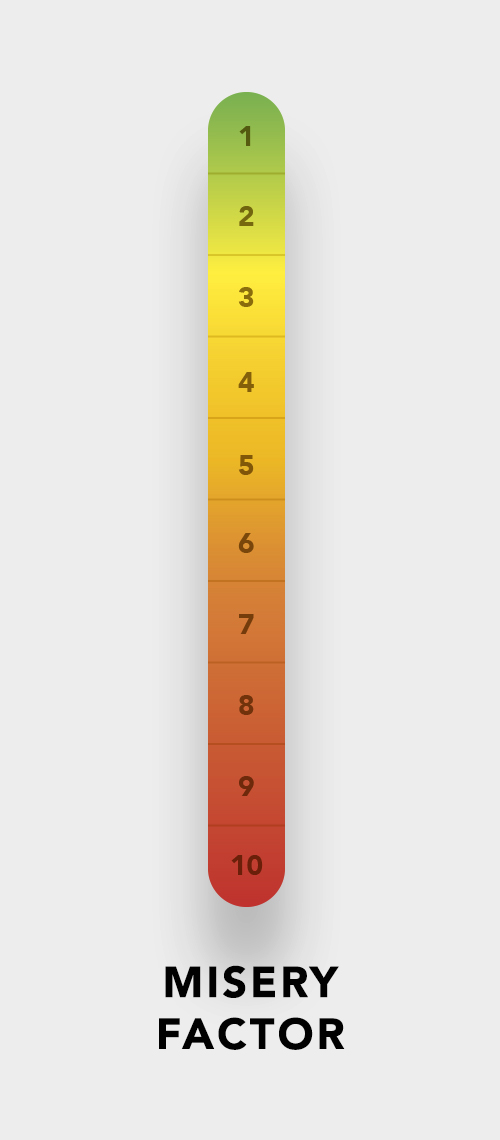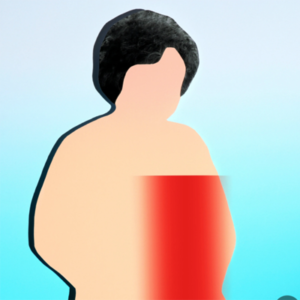8 of the Most Painful Medical Conditions
A roundup of the top agony-inducing ailments, and new ways to find relief
by Lisa Haney, AARP, February 8, 2019
It started with a persistent jaw ache. Eileen R., a grant writer in Dallas, had gone to several dentists, who suggested the cause was a bad tooth or, perhaps, temporomandibular joint disorder (TMJ). But none could pinpoint the source of her discomfort. When she mentioned the migraine headaches she was also getting, a dentist referred her to a rheumatologist.
It took several years of visits with a number of specialists, but eventually, Eileen found Scott Zashin, a Dallas rheumatologist. He diagnosed her with fibromyalgia, a disorder in which the brain becomes overly sensitive to pain signals throughout the body, often accompanied by constant fatigue. “It doesn’t cause you to die; it just causes you to be uncomfortable — more than uncomfortable, it can be very significant pain,” says Eileen, 72, now retired. She feels it in her hips, neck and fingers. “It zaps your energy,” she adds. “You just can’t do anything. It’s very profound fatigue.”
Heart disease, cancer, HIV and other life-threatening diseases get all the press (and the celebrity fundraisers). But there are millions of Americans just like Eileen who suffer from conditions, both acute and chronic, that aren’t life-threatening — they’re just life-ruining. We rounded up some of the worst hombres and found the new treatments that are really making a difference.



Urinary Tract Infections
Women, welcome to Urinary Tract Infections 2.0. They’re a lot like the annoying UTIs of your youth, compounded by a lack of estrogen. That causes the vagina to become less acidic, allowing more infection-causing bacteria to move in, explains Mary Jane Minkin, a gynecologist and clinical professor at the Yale School of Medicine. Meanwhile, the linings of the bladder and the vagina thin, making it easier for the villainous bacteria that are ready to invade, she says.
The usual UTI agony fest is the frequent urge to urinate coupled with pain or burning when you do.
Fight back with estrogen
If you’re getting recurrent UTIs postmenopause, you likely need a treatment to restore estrogen in your vagina; this leads to more good bacteria developing there and improves the health of bladder tissue, too. Lots of estrogen meds help with vaginal dryness: pills, vaginal suppositories, a cream or ring. Imvexxy is a new, applicator-free vaginal insert you place into your vagina; it dissolves and releases estradiol, an estrogen. The four-microgram dose contains less estrogen than other treatments on the market. But don’t let the estrogen in vaginal products scare you; little of the hormone from these remedies is absorbed into the bloodstream, Minkin says.

Shingles
This painful, blistering rash develops on one side of the body (usually in a single stripe) or on the face. Shingles occurs when the varicella-zoster virus, which becomes dormant in your body after you get chicken pox, is reactivated, says internist William Schaffner, a professor of preventive medicine at Vanderbilt University Medical Center in Nashville, Tennessee. One in 3 people will get shingles at some point.
Even a breeze touching the affected area can be excruciating. Though the blistering and scabbing generally last for two to four weeks, pain can persist for weeks or months afterward. “The virus crawls along your nerve fibers and disrupts and chews on them,” Schaffner notes. Those damaged nerve fibers then fire off pain signals.
Fight back with a new vaccine
The latest shingles vaccine, Shingrix, hit the market in the fall of 2017, and it’s much more effective than its predecessor, Zostavax — with a protection rate of more than 90 percent (the Zostavax rate is 51 percent or less). Shingrix works really well in people age 70-plus and in those with compromised immune systems, Schaffner says. Adults 50 and older get two doses of Shingrix, spaced two to six months apart. And if you ever get shingles, head to your doctor within three days to get antiviral medication, which will shorten the duration and severity of the rash.

Benign Prostatic Hyperplasia
The prostate gland swells over the years as it is exposed to testosterone. Eventually, this swelling starts to impinge on the urethra, which runs through the middle of the gland — a condition known as benign prostatic hyperplasia (BPH). Half of men in their 50s and 60s have some changes related to BPH; in their 80s, most men do. It’s a normal part of aging, says Lance Mynderse, a urologist at the Mayo Clinic.
BPH can make you pee more often and urgently, particularly at night. You may have difficulty starting to urinate or fully emptying your bladder.
Fight back with hot vapor
One of the latest breakthroughs is Rezum, a one-time office procedure during which a surgeon injects hot vapor into the prostate with a needle — usually in four to six sites. The steam destroys the tissue blocking the flow of urine. It will take at least three months to see major improvements in symptoms, but there’s very little risk of sexual side effects. Another new procedure is the UroLift. During a short office treatment, a surgeon delivers small sutures with T-shaped clips on the outside and inside of the prostate next to the urethra. Tension on the clips squeezes the sides of the prostate, which opens a channel going through the middle, relieving pressure on the urethra.

Gout
A form of inflammatory arthritis, gout happens when uric acid, which normally dissolves in the blood, builds up in the body and causes needlelike crystals to form in the joints, often in the big toe. Gout is historically attributed to overindulging in rich foods and alcohol, but it’s something anyone can get, regardless of what one eats or drinks.
A gout attack often occurs at night, with sudden acute pain and swelling in a joint, says rheumatologist Tuhina Neogi, a professor of medicine and epidemiology at the Boston University School of Medicine. Attacks can last up to 14 days. At first, they occur months or years apart. If the illness is left untreated, though, the attacks can become chronic and disfiguring.
Fight back with cherries
In a 2012 study of 633 people, coauthored by Neogi and published in Arthritis & Rheumatology, eating cherries over a two-day period was associated with a 35 percent lower risk of gout attacks, compared with not eating this fruit. When those who ate cherries took the uric acid reducer allopurinol as well, their risk was 75 percent lower than it was for participants who didn’t have either. More research is needed, “but at the very least, cherry intake in the context of allopurinol use doesn’t seem to be detrimental and may confer some additional benefit,” Neogi notes.

Fibromylagia
This clinical disorder is marked by muscle pain and chronic fatigue. You can have fibromyalgia alone or along with another condition such as rheumatoid arthritis. Though it’s most common in middle-aged women, fibromyalgia may worsen with age.
“People with fibromyalgia hurt all over,” explains Dallas rheumatologist Zashin. “They have tender points, which hurt when touched, on all four quadrants of their body.” They often have insomnia, depression and other issues. “A lot of rheumatologists shy away from fibromyalgia patients because there may not be a quick solution, and they may require more time during their visit,” Zashin adds.
Fight back with an anti-addiction drug
Some physicians prescribe low doses of naltrexone — typically used to help addicts stay off alcohol and drugs — to fibromyalgia patients. In one study, 32 percent of those taking low-dose naltrexone experienced significantly less pain and fatigue or sleep problems, compared with 11 percent who took a placebo. “Naltrexone blocks opioid receptors; the body responds by increasing levels of natural opioids, helping with pain and fatigue,” Zashin says.

Kidney Stones
These nasties are hard lumps of minerals that form inside your kidneys and can affect any part of your urinary tract. “They’re kind of like rock candy,” says Marcelino Rivera, a urologist at the Mayo Clinic in Rochester, Minnesota. “They’re a crystal that forms in a supersaturated solution.” The more concentrated the urine is, the more crystals there are and the higher the likelihood they’ll form a kidney stone. Older adults are most susceptible because they are prone to dehydration.
Imagine peeing out rock candy. Even small stones can cause extreme pain when they pass through — or get lodged in — your urinary tract.
Fight back with water
“If you can dilute your urine enough, you can dilute those crystals, and that’s going to prevent kidney stone disease,” Rivera explains. To do that, you need to produce two and a half liters of urine a day — which could mean drinking up to three liters of fluid daily. New digital, flexible scopes can remove smaller stones from any part of the kidney; stones two centimeters or bigger require a different procedure. In addition, diuretic high blood pressure meds lower calcium levels in the urinary tract to help prevent stones from forming. And citrates are chemicals that bind to calcium, keeping it from creating crystals.

Migraines
Blame genetics for these killer headaches. An inherited brain disorder leaves migraine sufferers vulnerable to triggers such as a lack of sleep, stress, hunger, bright lights or even overuse of pain meds. During a migraine attack, neurons are activated, leading to throbbing pain. You may feel sick to your stomach or see flashing lights — the aura before the hurt begins.
Migraines can really mess up your life. An untreated big headache can go on for four to 72 hours; people with chronic migraines endure a minimum of eight per month, with at least 15 total days of headaches. “But some people have a continuous migraine that never stops,” says Teshamae Monteith, chief of the Headache Division and assistant professor of clinical neurology at the University of Miami Miller School of Medicine and a member of the American Academy of Neurology.
A migraine can feel like an explosion inside your noggin, a vise squeezing your skull or even “like one knife going through the center of your brain in one direction, and another going through in another way. Where they meet is the point of maximum pain intensity,” Monteith says.
Fight back with new prevention drugs
In 2018 the FDA OK’d three drugs — Aimovig, Ajovy and Emgality — that cut repeat migraines by about 2½ per month, though some people get more relief. These pricey (cost: $6,900 per year), once-a-month injectables work in a new way, blocking a peptide that transmits migraine-pain signals. Monteith says they may be an especially good option for older adults who get migraines; other medicines that are used for prevention can cause weight gain, low blood pressure, hair loss, and sedation.

Frozen Shoulder
When adhesions develop in your shoulder capsule, they can lead to a painful, progressive tightening of the joint and a loss of movement that can last for months or sometimes years. Frozen shoulder is most common in women ages 45 to 60, says Jordan D. Metzl, a sports medicine physician at New York’s Hospital for Special Surgery and the author of The Exercise Cure. Some people confuse early symptoms with arthritis and don’t seek treatment, which is a big mistake. The two crucial differences: First, arthritis pain comes and goes, but this condition comes and stays, often becoming particularly painful at night; second, the telltale loss of movement makes it difficult or impossible to reach behind you for a task like hooking a bra.
Fight back with an easy stretch
“It’s critical to see your doctor as soon as you have symptoms,” Metzl emphasizes. “The deeper you get into the inflammation stage, the longer your recovery.” Treatment generally consists of cortisone shots and physical therapy. Full recovery comes in weeks or months, depending on the severity of your case.
Meanwhile, Metzl recommends the following DIY therapy for better shoulder mobility in the early stage and also for prevention: Stand facing a wall with your palms flat against it at shoulder height. Finger-walk your hands up the wall until you feel a good stretch in your shoulders. Hold for a 10-count, and finger-walk back to the starting position. “You don’t even need a wall,” Metzl says. “You can mimic the motion in the air and it will still be effective.”



